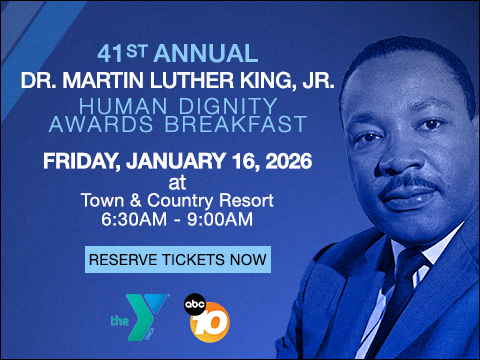SAN DIEGO (KGTV) — A new SANDAG report found that when it compared to the region's Caucasian population, Black and Hispanic communities are more than four times as likely to live in an area impacted by COVID-19 and unemployment.
The report says more than two-thirds of the county's Black (67%) and Hispanic (70%) populations live in zip codes with higher than average unemployment rates. About half of Black (52%) and Hispanic (49%) San Diegans live in zip codes with higher than average COVID-19 cases as well.
In comparison, the study says Caucasian (14%) and Asian (24%) populations are less impacted in both cases.
"As regional elected officials and leaders, it is important for us to think strategically about how to coordinate with the Black and Hispanic communities – and all communities in need – to determine which programs and policies can put in place to guide an equitable recovery as businesses begin to reopen and as people return to work or look for new jobs," said SANDAG Chair and Poway Mayor Steve Vaus.
SANDAG says the most affected areas reside in the southern part of the county. The following zip codes have been most affected by COVID-19:
- 91910 (Chula Vista N)
- 91911 (Chula Vista S)
- 91917 (Dulzura)
- 91932 (Imperial Beach)
- 91950 (National City)
- 91977 (Spring Valley)
- 91978 (Rancho San Diego)
- 92020 (El Cajon)
- 92021 (El Cajon)
- 92102 (Golden Hill)
- 92105 (City Heights)
- 92113 (Logan Heights)
- 92114 (Encanto)
- 92115 (College)
- 92139 (Paradise Hills)
- 92154 (Nestor)
- 92173 (San Ysidro)
As of June 7, SANDAG reported the region's unemployment rate at 28.5%, or about 480,000 residents.
SANDAG found that unemployment and the effect on industries have hit populations differently:
- Hispanic employees make up the largest percentage of the essential workforce in building cleaning services (65%), grocery and drug stores (44%), and childcare and social services (39%).
- Black employees account for more than 7% of the childcare and social services; 9% in trucking, warehouse, and postal service; and nearly 20% of public transit workers.
- Asian employees represent 22% of those working in the health care sector.
- White employees account for only 40% of the pool of workers in high-contact and essential occupations.
To read SANDAG's full report, click here.



